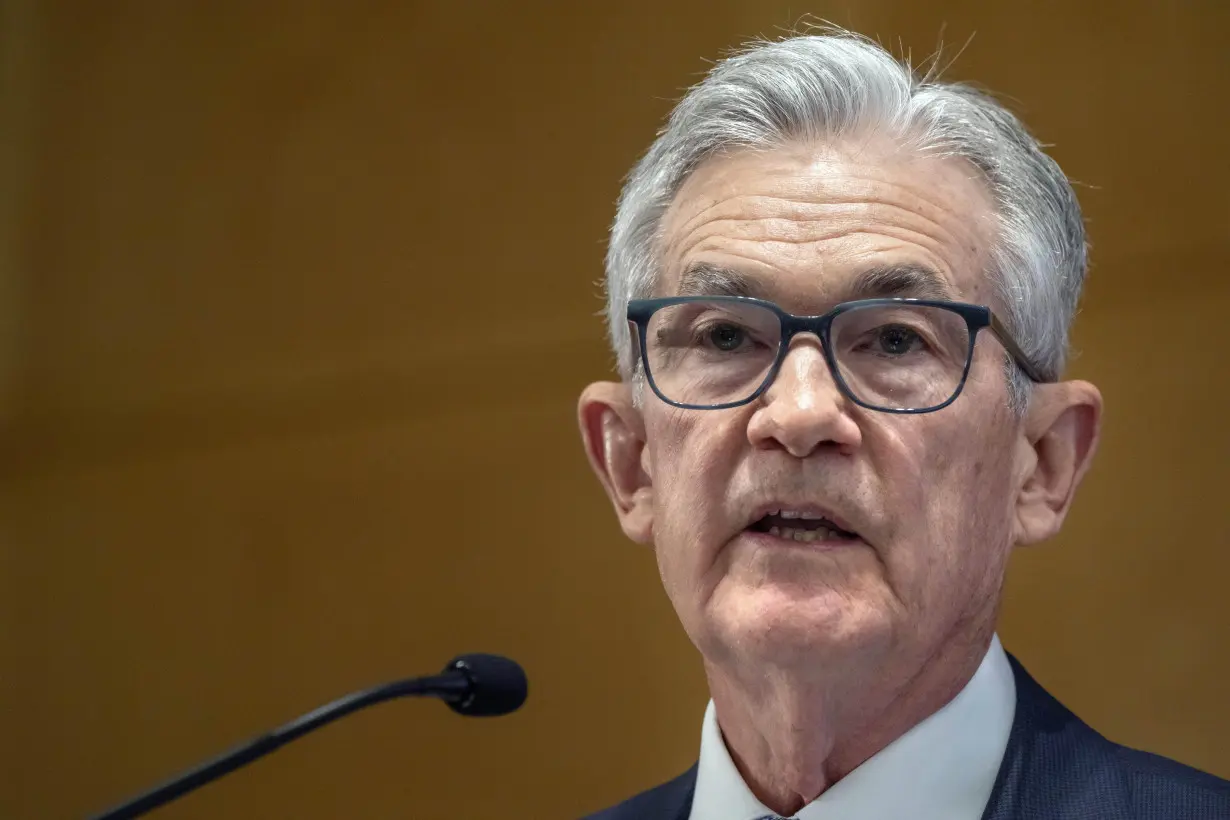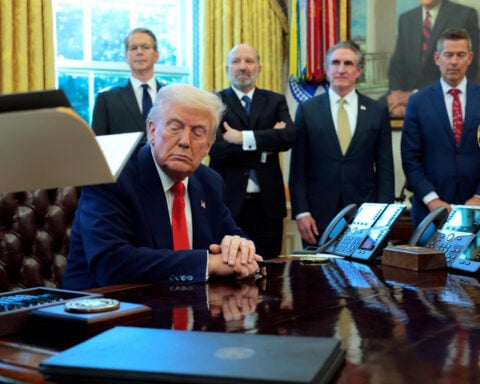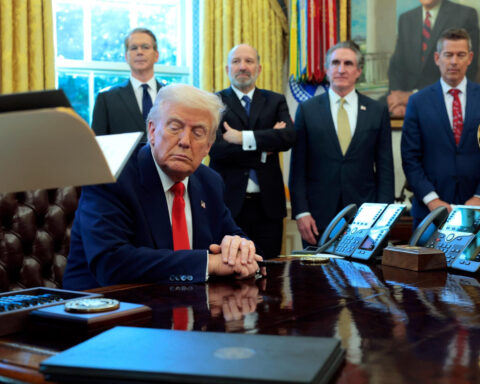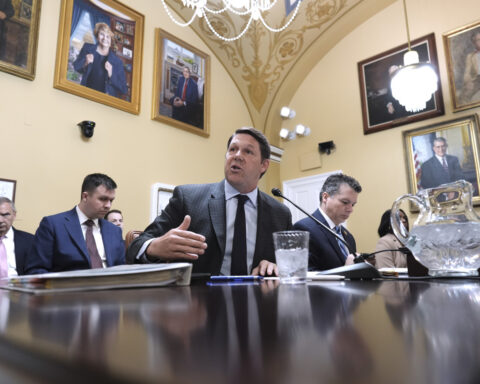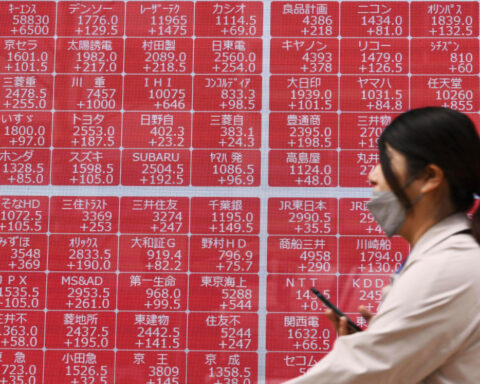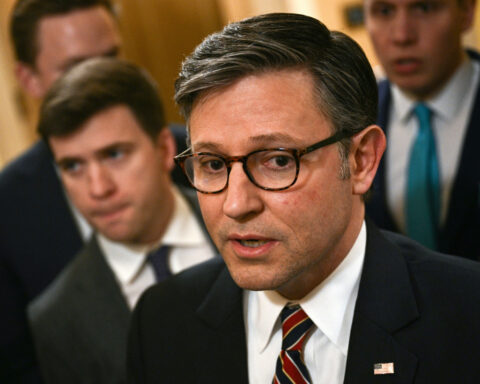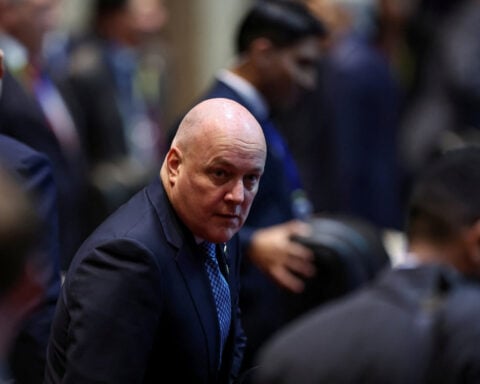WASHINGTON (AP) — Inflation is slowing steadily, but it’s too early to declare victory or to discuss when the Federal Reserve might cut interest rates, Chair Jerome Powell said Friday.
Speaking at Spelman College in Atlanta, Powell noted that consumer prices, excluding volatile food and energy costs, rose at just a 2.5% annual rate in the past six months. That's not far above the Fed's 2% inflation target.
Still, more progress is needed, Powell said. He added, "It would be premature to conclude with confidence" that the Fed has raised its benchmark interest rate high enough to fully defeat inflation.
Nor is it time to “speculate on when policy might ease," Powell said, referring to the possibility of cuts in the Fed's benchmark interest rate, which affects many consumer and business loans.
Instead, he said, the Fed's interest-rate-setting committee “is moving forward carefully” — phrasing that analysts consider a signal that the central bank doesn't plan any changes to interest rates anytime soon.
Many Wall Street investors have recently stepped up their bets that the Fed will cut rates as early as May, according to CME Fedwatch, in part after another Fed official earlier this week appeared to open the door to rate cuts by this spring.
Still, the Fed's policymakers are expected to leave interest rates alone when they next meet Dec. 12-13. It would be the third straight meeting in which they have kept rates at their current level. Beginning in March 2022, the Fed raised its key rate 11 times from near zero — to about 5.4%, the highest level in 22 years.
Those rate hikes have made loans significantly more expensive across the economy, notably for mortgages, auto loans, credit cards and business borrowing. The result has been diminished purchases of homes, cars, furniture and appliances, a trend that has slowed the economy and forced prices modestly lower in those categories.
Powell's remarks Friday follow comments from a raft of Fed officials this week, with most of them signaling that the Fed can afford to keep its key rate steady in the coming months. But like Powell, they have mostly shied away from signaling a definite end to rate hikes.
Yet some officials have sounded more optimistic than others. Christopher Waller, a key Fed official who typically favors keeping rates relatively high, said Tuesday that he was “increasingly confident” that the central bank’s benchmark rate is high enough to return inflation to the Fed’s 2% target.
Waller went so far as to open the door to the possibility that the Fed would cut rates as early as spring as long as inflation continued to cool.
Some other Fed officials, however, suggested that one more rate hike remains potentially on the table should inflation remain chronically high.
John Williams, president of the Federal Reserve Bank of New York, who is close to Powell, said Thursday that the Fed's key rate is “at or near” its peak. Williams added that the central bank’s benchmark rate is the most economically restrictive it has been in 25 years.
Still, he added that “it will be appropriate to maintain a restrictive stance for quite some time” to bring inflation back down to 2%.
Vincent Reinhart, a former Fed economist and now chief economist at Dreyfus & Mellon, said that many Fed officials are reluctant to take the possibility of another rate hike off the table because doing so would immediately raise pressure on the Fed to cut rates.
“Doing nothing is hard work,” Reinhart said. Any sign the Fed is done raising rates and simply wants to keep them at their current level for an extended period will nevertheless spur speculation about the timing of rate cuts, he said.
On Thursday, the government reported that inflation fell to 3% in October compared with 12 months earlier, according to the Fed's preferred gauge. That was the lowest such level since the spring of 2021.
Core prices, which exclude food and energy, rose 3.5% from a year earlier. From September to October, overall prices were essentially unchanged, and core prices ticked up 0.2%, evidence that inflation is steadily easing.

 Trump has begun another trade war. Here's a timeline of how we got here
Trump has begun another trade war. Here's a timeline of how we got here
 Canada's leader laments lost friendship with US in town that sheltered stranded Americans after 9/11
Canada's leader laments lost friendship with US in town that sheltered stranded Americans after 9/11
 Chinese EV giant BYD's fourth-quarter profit leaps 73%
Chinese EV giant BYD's fourth-quarter profit leaps 73%
 You're an American in another land? Prepare to talk about the why and how of Trump 2.0
You're an American in another land? Prepare to talk about the why and how of Trump 2.0
 Chalk talk: Star power, top teams and No. 5 seeds headline the women's March Madness Sweet 16
Chalk talk: Star power, top teams and No. 5 seeds headline the women's March Madness Sweet 16
 Purdue returns to Sweet 16 with 76-62 win over McNeese in March Madness
Purdue returns to Sweet 16 with 76-62 win over McNeese in March Madness
